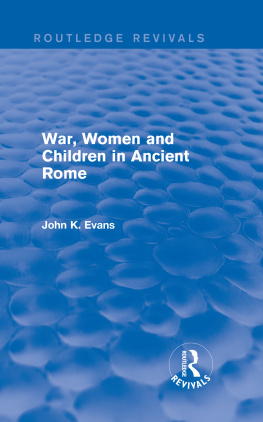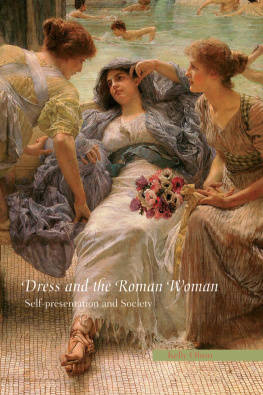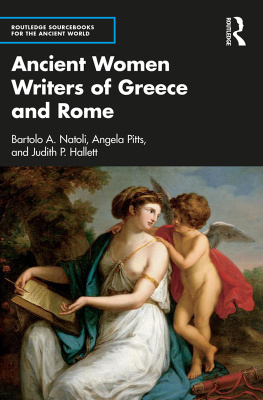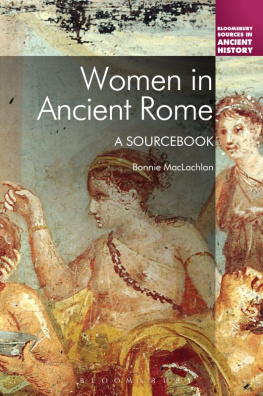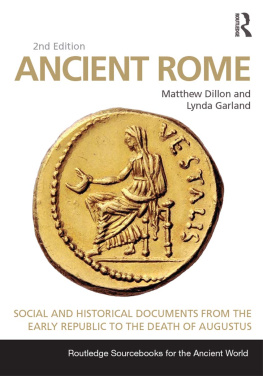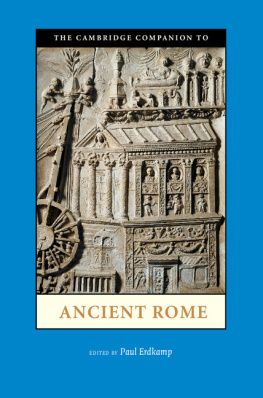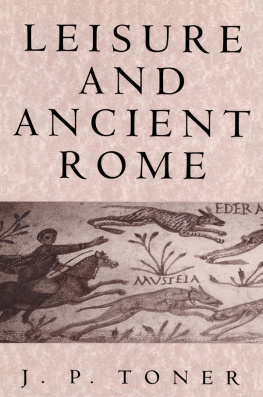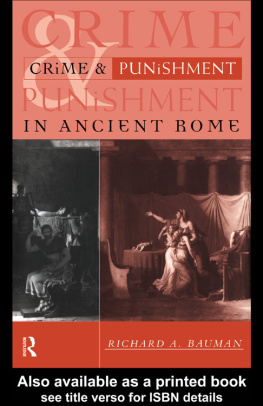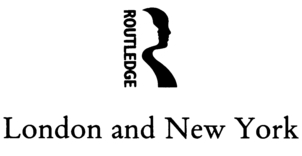Routledge Revivals
War, Women and Children in Ancient Rome
J.K. Evans' pioneering work explores the profound changes in the social, economic and legal condition of Roman women, which, it is argued, were necessary consequences of two centuries of near-continuous warfare as Rome expanded from city-state to empire. Bridging the gap that has isolated the specialised studies of Roman women and children from the more traditional political and social concerns of historians, J.K. Evans' investigation ranges from Cicero's wife Terentia to the anonymous spouse of the peasant-soldier Ligustinus, charting the severe erosion of the very institutions that kept women and children in thrall.
War, Women and Children in Ancient Rome will be of interest not only to classicists and historians of antiquity but also to sociologists and anthropologists, while it will similarly prove an indispensable reference work for historians of women and the family.
War, Women and Children in Ancient Rome
John K. Evans
First published in 1991
by Routledge
This edition first published in 2014 by Routledge
2 Park Square, Milton Park, Abingdon, Oxon, OX14 4RN
and by Routledge
711 Third Avenue, New York, NY 10017
Routledge is an imprint of the Taylor & Francis Group, an informa business
1991 John K. Evans
The right of John K. Evans to be identified as author of this work has been asserted by him in accordance with sections 77 and 78 of the Copyright, Designs and Patents Act 1988.
All rights rederved. No part of this book may be reprinted or reproduced or utilised in any form or by any electronic, mechanical, or other means, now Known or hereafter invented, including photocopying and recording, or in any information storage or retrieval system, without permission in writing from the publishers.
Publisher's Note
The publisher has gone to great lengths to ensure the quality of this reprint but points out that some imperfections in the original copies may be apparent.
Disclaimer
The publisher has made every effort to trace copyright holders and welcomes correspondence from those they have been unable to contact.
A Library of Congress record exists under LC control number: 90045259
ISBN 13: 978-0-415-73990-0 (hbk)
ISBN 13: 978-1-315-81632-6 (ebk)
WAR, WOMEN AND CHILDREN IN ANCIENT ROME
John K. Evans
First published 1991
by Routledge
11 New Fetter Lane, London EC4P 4EE
Simultaneously published in the USA and Canada
by Routledge
a division of Routledge, Chapman and Hall, Inc.
29 West 35th Street, New York, NY 10001
1991 John K. Evans
Typeset in 10/12 pt Garamond by Selectmove
Printed and Bound in Great Britain by
Biddies Ltd, Guildford and Kings Lynn
All rights reserved. No part of this book may be reprinted or reproduced or utilized in any form or by any electronic, mechanical, or other means, now known or hereafter invented, including photocopying and recording, or in any information storage or retrieval system, without permission in writing from the publishers.
British Library Cataloguing in Publication Data
Evans, John K.
War, Women and children in ancient Rome. 1. Roman Empire. Society. Role of Women I. Title 305.420937
Library of Congress Cataloguing in Publication Data Evans, John K.
War, Women, and children in ancient Rome / John K. Evans. p. cm.
Includes bibliographical references and index. ISBN 0-415-05723-X
1. WomenRomeHistory. 2. Women's rightsRomeHistory. 3. WomenLegal status, laws, etc. (Roman Law). 4. Women and warRomeHistory. 5. ChildrenRomeHistory. I. Title.
HQ1136.E93 1991
305.4'0937dc20
90-45259
ISBN 0-415-05723-X
MATRI CONIUGI CARISSIMIS
Contents
Influenced in large part by the feminist movement, over the last two decades several new fields of study have emerged within the discipline of History. Foremost among these are the history of women, and the history of the family; each has spawned a voluminous and still-growing literature, which embraces not only books and monographs but also an array of periodicals devoted specifically to these areas of interest. Happily, despite the skepticism with which historians of the classical world normally welcome innovative methodologies, students of Greece and Rome have not insulated themselves from these developments. Since the pathbreaking publication some fifteen years ago of Sarah B. Pomeroy's Goddesses, Whores, Wives, and Slaves. Women in Classical Antiquity (New York, 1975), the literature devoted specifically to Greek and Roman women has swelled to the point that it is now difficult for the interested reader to stay abreast of it all. This literature is noteworthy above all for its impressive diversity of perspective, which ranges from analysis of the erotic treatment of women in Greek and Roman art to textual criticism designed to illuminate the role of women in the early Church. It is, however, almost equally noteworthy for its sophisticated application of methods of analysis first elaborated in other disciplines to the often intractable sources for classical antiquity. In this vein, the structuralist studies of Greek myth and tragedy come instantly to mind. Finally, it should be noted that studies of the family, while not yet able to rival the literature devoted to women per se in terms of sheer quantity or methodological sophistication, are also beginning to appear in increasing numbers. It is, for example, only during the course of the last decade that children have become a significant research interest for historians of Greece and Rome.
Undergraduate courses that concentrate exclusively on the history of women in the ancient world have also proliferated, most noticeably in the American universities. Ironically, there is one feature of the literature in this field that makes it relatively easy to organize such courses for students otherwise unfamiliar with classical antiquity, yet at the same time constitutes a serious impediment to the future development of the field at the research level. This is the tendency to treat the history of women in antiquity as a discrete topic, or to put it another way, the failure to integrate women's history into the broader fabric of Ancient History at large. This deficiency is especially evident in Roman history: the last decade has seen the publication of a large number of books devoted to Roman women, but whatever else one may say about them, all of these works share one thing in common - they are divorced from the issues of perennial concern to the broader community of political and social historians of Rome. It is this deficiency that the present exercise will attempt to redress. Its thesis may be briefly stated: so rigidly patriarchal a society as Rome of the Twelve Tables could not send hundreds of thousands of men abroad to prosecute wars of conquest that went on virtually without interruption for the last two hundred years of the Republic's existence without inviting severe erosion of the institutions that kept women and children in thrall. It thus attempts to link the study of Roman women and children to one of the most venerable topics in Roman history, whether the perspective be that of the political or social historian: the domestic consequences of Roman 'imperialism' in the period that begins with the Hannibalic war and concludes with the introduction of the Principate under Augustus. It embraces working-class women as well as the elite, and attempts to elucidate developments in the countryside as well as the cities. Throughout, but most obviously in the two chapters devoted to working women and children, it also attempts to define the limits that a capricious and lacunose source tradition must impose on an investigation of this type. In these two chapters, our conclusions cannot hope to rise above the problematic, but since this work was written with the hope of broadening the current debate about Roman women and children, this is perhaps as it should be.

